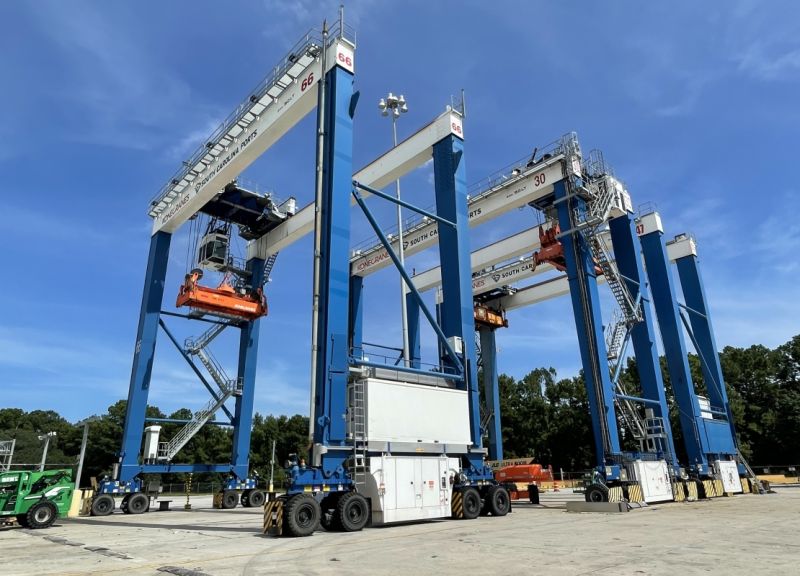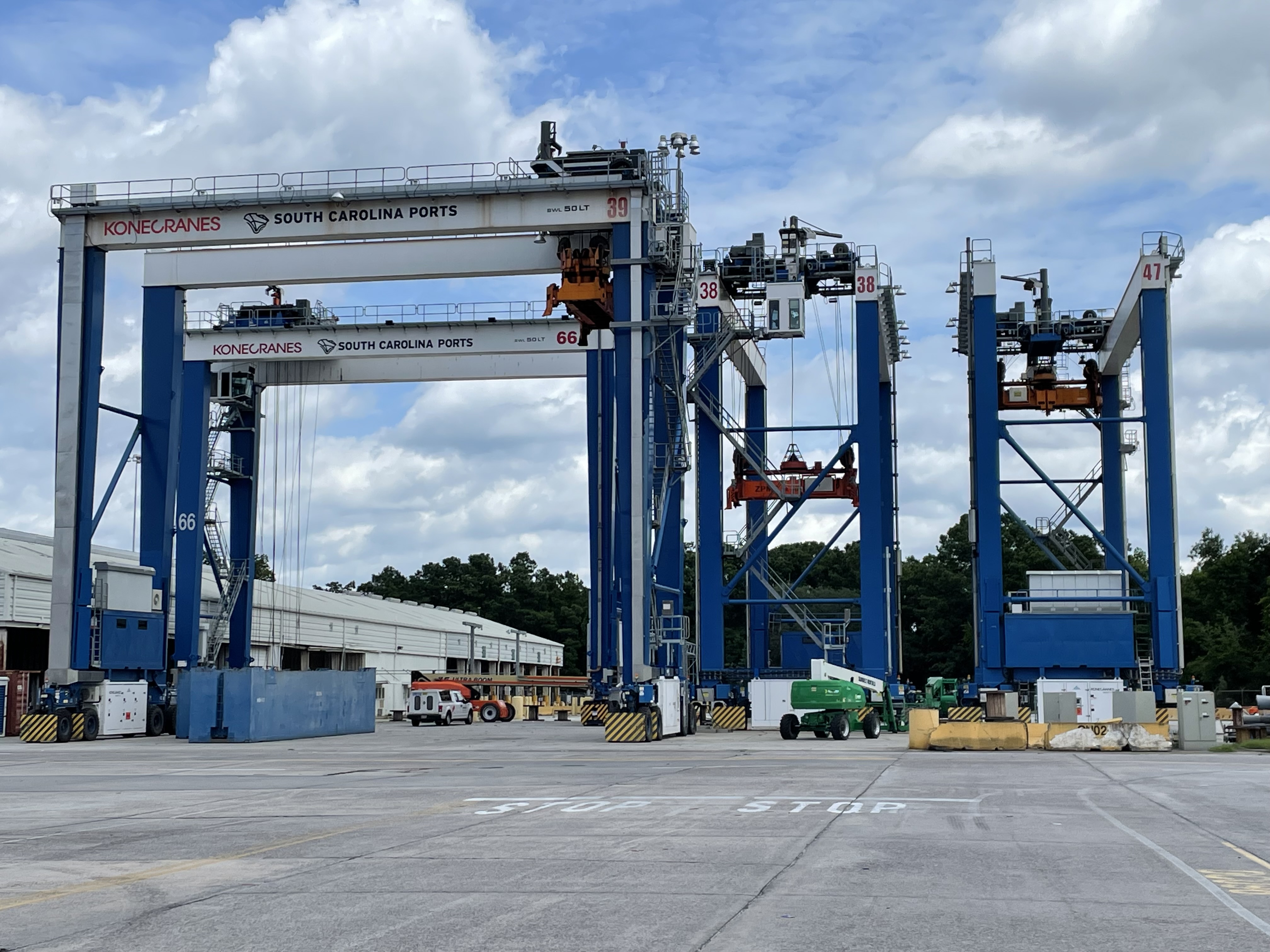Retrofits convert 12 Konecranes RTGs into fuel-efficient hybrids in South Carolina

At the Wando Welch Terminal in Charleston, South Carolina Ports has had 12 of their Konecranes RTGs upgraded with an EPA-approved Konecranes hybrid retrofit. These cranes now have reduced fuel consumption and lower carbon emissions with easier maintenance while retaining the same level of operational performance.
SC Ports is a vital part of the economy of South Carolina, with the Port of Charleston alone handling 2.6 million TEUs per year. To help maintain this volume, they’ve built up a fleet of 84 rubber-tired gantry cranes (RTGs) - at first diesel, and later hybrid - from Konecranes. When they noticed how well the new Konecranes hybrids reduced emissions and energy consumption, and how the smaller onboard diesel generator (genset) required less maintenance, they decided to retrofit 12 older RTGs to bring them up to the same standard, thanks to a $2 million grant from the U.S. Environmental Protection Agency’s Diesel Emissions Reduction Act (DERA) program.
The retrofitted RTGs had a battery installed while the diesel engine was removed and replaced with a smaller genset. Under normal operation, the generator provides battery charge, and the crane operates solely under battery power. But for heavier lifts, the battery and genset work together for the extra power required. Because no uncoupling is needed, operators can switch stacks easily. Braking energy feeds back to top up the battery charge. And if the battery is not available for some reason, the genset can act as an emergency backup power source.
An easy way to reduce emissions and maintenance at reasonable cost
The goal with every retrofit is to make the handling, functionality, and reliability of existing cranes equivalent to the latest generation of Konecranes equipment. This retrofit has added hybrid technology to reduce fuel consumption and lower emissions while simplifying maintenance and is a cost-effective way to modernize an RTG fleet.
“We’ve made a long-term commitment to sustainability, so we’re keen to bring all of our Konecranes RTGs to the same emissions level and maintenance efficiency as our new hybrids,” says Michael Stresemann, SC Ports’ Vice President of Equipment Maintenance. “Because Konecranes is the original equipment manufacturer, their retrofit has provided us with a seamless upgrade to our older machines as we continue to develop our terminal for the future.”
SC Ports’ RTG operators have noted that, apart from a little less noise, they can’t tell any difference in performance when they compare how the cranes were before the retrofit with how they are now. The hybrid solution is made for high utilization, designed for 91,000 moves per year. Regulated to Tier 4, the generator runs for about one-third of its operating time. It doesn’t stop to charge, but keeps working automatically, invisible unless the operators take a peek at the Battery Monitoring System (BMS) through the control panel. On-site technicians appreciate the easier engine maintenance, allowing more time for other tasks.
Cooperation led to EPA approval
“SC Ports played a key role in obtaining EPA approval for our hybrid technology, as they allowed independent testing by West Virginia University on our hybrid RTGs on their own premises,” says Carl Walters, Sales Director, Port Services, USA, Konecranes. “Their purchase of new hybrid equipment and their decision to retrofit their older RTGs shows their faith in the continuing development and durability of Konecranes technology.”

EPA approval means that customers in the United States who buy Konecranes hybrid RTGs or retrofit their older machines can cover up to 60% of the cost through Diesel Emissions Reduction Act (DERA) funding. Thanks to the Konecranes hybrid solution, American ports have more sustainable options available to them.
The hybrid retrofit is part of Ecolifting™, Konecranes’ continuous work to decrease the carbon footprint of our customers. From eco-optimizing diesel drives to hybridization and fully electrified fleets, we will continue to do more with less.
